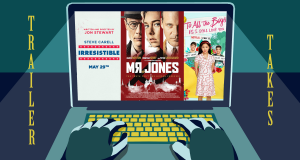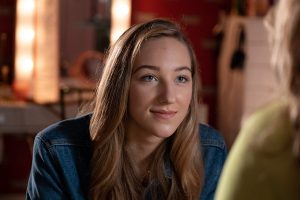When I was in fifth grade, I had seven boyfriends. All of them were tall, dark, handsome, and entirely fictional.
I’ve had a complicated love affair with Young Adult (YA) fiction. While its page-turning plots and fantastical worlds have stretched my imagination, its utter lack of protagonist diversity and problematic depiction of romance made me wonder whether it was time to turn the page on YA fiction, once and for all.
In middle school, I was the ultimate YA fiction addict. I had favorite reviewers, checked out ten different books from the library every week, and sauntered by Barnes & Noble’s “What Young Adults Are Reading” section with the smug satisfaction that I could tell you the plot and average Goodreads rating of every novel. Even though growing older than the novels’ heroines meant that I was pushing the “Young” in “Young Adult,” I couldn’t give up on my love.
And my favorite genre continues to influence my life in college. I met one of my closest friends because we left a party early to talk about YA fiction until late into the night. I found one of my favorite studying spots at the beautiful Georgetown Neighborhood Library because of a search for a new YA book to read. From Heartless to Divergent to The Vampire Diaries (superior to Twilight), YA fiction has it all. Need a perfect book crush? Check. Need some empathy-building skills? Check.
It wasn’t until I attended Bystander Intervention Training last semester that I fully realized the YA fiction I loved also checked the “harmful perception of romance” box. All the things I thought were romantic—the spontaneous kisses of strangers, the masculinity defined by toxic overprotectiveness, and the heteronormativity of my favorite couples—were actually a recipe for disaster. When I looked back on my high school friends’ stories of unrequited kisses, jealousies from partners of male friends, and unhealthy dependencies on significant others, I realized that I used to find these things romantic, and I should have done more to emphasize their problematic nature. I also realized that I perceived many of these toxic messages as positive because of the stories that occupied my time.
Specifically, one of my favorite novels, Leigh Bardugo’s Shadow and Bone, has numerous issues I hadn’t thought about before: an overprotective love interest who thinks he knows what’s best for the female protagonist; exclusively good-looking characters, confusing romance with lust; spontaneous acts of affection without consent; predominantly white characters; and heteronormativity. Shadow and Bone has a special place in my heart, so admitting these faults deeply disappoints me.
But most of all, understanding the issues in just one series made me think about what kind of impact the 500 books on my Goodreads “read” shelf have had on me.
When you’re wearing rose-tinted glasses, red flags look normal. But when you’re taught that red flags, that toxic romance, are roses to be picked—to be sought after or desired in some way—you might just get pricked by thorns.
On top of problematic depictions of romance, a huge thorn of YA fiction is the lack of representation for non-white people, something I became explicitly conscious of when I read Alexandra Bracken’s The Darkest Minds. I loved this series for its emotional vibrancy, cute romance, and gripping plot. And to be fair, there was one side character who was non-white, which was more than most of the novels I was reading before college.
But I wanted to be more than a side character.
I wanted to be the heroine. I wanted to escape from the margins of stories and become the star, be the girl with incredible powers who finds the perfect significant other and saves the world armed with her bravery and intellect. But achieving that became more difficult when these diverse worlds weren’t diverse in the area where it mattered most, ensuring that I would never be the chosen one.
There needs to be a particular emphasis on the diversity represented in the books middle- and high-schoolers (and I) are reading, both so readers who “were going to imagine all the characters as white anyway” are exposed to diversity sooner, rather than later, and so minority readers do not grow accustomed to their lack of presence in literature. For me, a dearth of diverse representation created the illusion that certain stories only belonged to those who society deemed “normal,” that I was somehow unworthy. No minority reader should feel that way. Everyone deserves to see themselves in the pages they read.
But diverse representation needs to occur in a deliberate way, not just as tokenism. One’s minority status shouldn’t be a “quirk,” nor somehow representative of every minority’s experiences. For instance, novels like Tomi Adeyemi’s Children of Blood and Bone and Jenny Han’s To All The Boys I’ve Loved Before that include representation without the necessity of minority-status trauma as a defining characteristic can be essential in normalizing diversity to young readers. Minorities are more than their obstacles; still, YA novels like The Hate U Give which also offer a vital recognition of real-world problems allow minority readers to see the struggles they face represented.
Personally, YA fiction’s room for improvement encourages writing. YA fiction taught me how dialogue works, how storytelling in the past tense is a whole different vibe from storytelling in the present, and how character-building is one of the most important parts of any fiction writing; however, YA fiction’s problems are what ultimately inspired me to include the representation I wish I had been able to read about. What YA’s faults have taught me is if you don’t see yourself in the pages, put yourself in the pages.
When I walk by that Barnes & Noble table now, I see so many stories I want to delve into, inclusive literature I wish I’d had as an option ten years ago. For example, Bardugo’s follow-up novel has characters of diverse races, sexualities, and abilities. And Bracken wrote another series in which the main love interest is black (and her heroine in The Darkest Minds movie adaptation is non-white).
The new YA fiction being published only fuels my desire to support these authors on their own quest for change, and to hopefully contribute some diverse stories of my own. I hope kids from underrepresented groups can realize they are no longer confined to the margins, that they have as much right to volunteer as tribute as Katniss Everdeen. I hope all readers understand that an Edward Cullen, or any other type of “Prince Charming” who undermines their significant other’s consent and independence, is anything but charming. And I hope that, once we remove the thorns, YA fiction and its characters (including my eighth tall, dark, handsome, and respectful boyfriend) will only be more reflective of the rich variety of our world.





